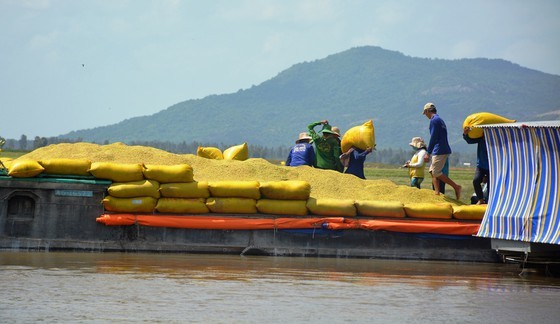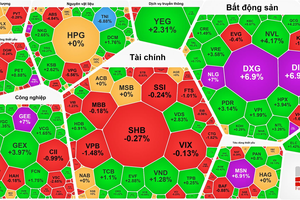
Accordingly, An Giang Province has asked for permission to prioritize the export of glutinous rice and Japonia rice varieties. Currently, farmers in An Giang Province sow more than 115,000 hectares of glutinous rice annually, equivalent to 747,500 tons of glutinous paddy, and around 10,000 hectares of round-grain paddy with a production of 75,000 tons per year.
The goal of producing these two aforesaid products is mainly for export, not for domestic consumption and in the past years, farmers and enterprises have connected and established an effective value chain from production to consumption.
Besides, the province has also asked to carry out existing export contracts, of which, giving priority to exporting early the amount of rice that already made or is in the process of making customs declarations and is jammed at ports, along with the amount of rice that has been contracted until the end of this year to help enterprises not to violate the contracts, reducing losses and stabilizing rice prices in the market.
According to calculation, by the end of April this year, the province will have around 48,475 tons of rice that are not delivered under contracts signed by 16 enterprises, worth US$23.6 million with the export price at $487 per ton. In case that the export of rice is suspended until May this year, 33,800 more tons of rice will not be exported.
The provincial People’s Committee said that the province plans to produce 4 million tons of paddy or around 2 million tons of rice this year. So it proposes the Government to base on food security requirements and have suitable export policies.
The goal of producing these two aforesaid products is mainly for export, not for domestic consumption and in the past years, farmers and enterprises have connected and established an effective value chain from production to consumption.
Besides, the province has also asked to carry out existing export contracts, of which, giving priority to exporting early the amount of rice that already made or is in the process of making customs declarations and is jammed at ports, along with the amount of rice that has been contracted until the end of this year to help enterprises not to violate the contracts, reducing losses and stabilizing rice prices in the market.
According to calculation, by the end of April this year, the province will have around 48,475 tons of rice that are not delivered under contracts signed by 16 enterprises, worth US$23.6 million with the export price at $487 per ton. In case that the export of rice is suspended until May this year, 33,800 more tons of rice will not be exported.
The provincial People’s Committee said that the province plans to produce 4 million tons of paddy or around 2 million tons of rice this year. So it proposes the Government to base on food security requirements and have suitable export policies.
























